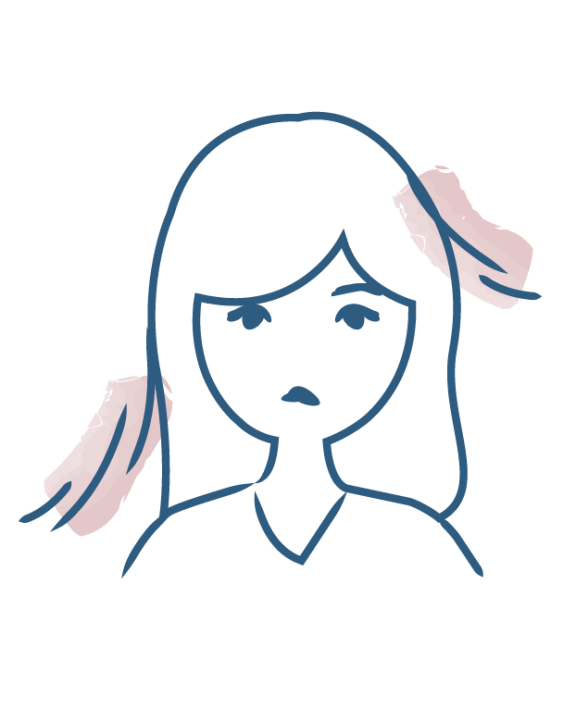How to fight hair loss
Hair implants
- The causes of hair loss
- Drug-induced hair loss
- Hair loss and menopause
- Secondary syphilis and hair loss
- Hair loss and hormones
- What is traction alopecia?
- Hair loss and genetics
- Hair loss and fatigue
- Hair loss and the pill
- Hair loss due to ringworm of the scalp
- Hair loss due to stress: reactional hair loss
- Spot baldness and hair loss
- Androgenetic alopecia in women and men
- Pregnancy and hair loss: everything you need to know
- Scarring alopecia
- Hair loss and Covid
- Everything you need to know about seasonal hair loss
- Hair loss: the impact of iron, zinc, vitamin D, C and B12 deficiencies

Hair implants
Although hair transplantation is an expensive solution that can sometimes be intimidating, it is also the longest-lasting and most effective way to fight androgenetic alopecia.
Hair loss: hair transplants and implants, a technique that appeals to women
Have you tried everything in the world of hair loss care? Not seeing the expected results? Hair transplantation or grafting is a therapeutic alternative that allows patients affected by androgenetic alopecia to regain their lost hair density in the long term. It is important to note that the results depend on the number of hairs transplanted in relation to the area to be covered, the quality of the hair (especially its color and size) and the characteristics of the transplanted area. Hair transplantation is also reserved for stabilized hair loss. If the transplant is performed too early in a young subject, it will be necessary to repeat a hair transplant a few years later to fill the baldness that has spread.
To continue to fight against alopecia, it is important to combine treatment with surgery. The goal is to preserve as much of the hair as possible around the transplanted hair.
In recent years, hair loss transplants have become frequent among women. The number of hair transplant operations for women (29% to 42% of women are affected by hair loss in their lifetime*) has even tripled since 2004. Various factors impacting quality of life can lead to people turning to this solution: severe psycho-emotional distress, but also real difficulties in styling one's hair on a daily basis.
The different types of hair implants to fight against alopecia
Hair loss transplantation is a surgical procedure performed under local anesthesia by surgeons specialized in aesthetic medicine. There are two main techniques, each of which can compensate for baldness associated with androgenetic alopecia.
- Hair transplantation by strip for the most serious alopecia. The principle: take a small strip of scalp horizontally from the nape of the neck, an area with a lot of hair, and then extract the grafts. Very small incisions are made in the bald area before implanting the grafts one by one. 1,000 to 4,000 hairs can be implanted per session. The results can be observed 8 to 9 months later.
- Follicular Unit Extraction (FUE) for minor and moderate alopecia. This procedure consists of removing follicular units separately and re-implanting them one by one on the areas affected by alopecia. The sessions are shorter and allow for fewer hairs to be implanted. The post-operative follow-up is also less painful and does not leave a scar.
Alternatives to hair implants in case of hair loss
Other treatment options and different techniques have been developed and tested to combat androgenetic alopecia:
- Platelet-rich plasma (PRP) injections. PRP is obtained from the patient's blood, which is then enriched with platelets by a centrifugation process and injected non-invasively into the scalp. Further studies will be useful to demonstrate the overall and long-term efficacy of this technique.
- Low-intensity laser. This is a promising technique for the treatment of androgenetic alopecia based on the fact that hair follicles need light to regenerate. Various studies have demonstrated its efficacy, which is comparable to that of medicinal treatments (minoxidil or finasteride), but the conditions of use of laser therapy have yet to be precisely defined before its final approval.
- Mesografting or the use of stem cells. The principle consists of culturing scalp stem cells capable of multiplying and reactivating hair follicles that no longer produce hair. More scientific evidence is needed to support its use in androgenetic alopecia.
The use of hair fibers and hair micropigmentation. These two techniques make it possible to quickly mask bald areas of the scalp. Whether it is the hair fibers that bind to the natural hair by an electrostatic phenomenon or the semi-permanent hair tattoo technique, the objective is to reduce the contrast between the scalp and the hair.
* Source: Blume-Peytavi et al., 2011; Norwood, 1975
Our targeted solutions for chronic hair loss
Discover our complete range
- Anti-hair loss and anchorage serum
ANAPHASE
Anti-hair loss and anchorage serumSlows down hair loss - Boost growth - Densifies hair - Volumises - Increases hair anchorage - Increases hair thickness - Food supplement
ANACAPS EXPERT
Food supplementHelps curb hair loss - Increases microcirculation - Provides strength and resistance - Anti-hair loss complement shampoo
ANAPHASE
Anti-hair loss complement shampooRevitalizes - Helps to strengthen - Prevents hair loss
More information
- Discover What kind of doctor should you consult about hair loss?
How to fight hair loss
What kind of doctor should you consult about hair loss?
- Discover What shampoo should you use for hair loss?
How to fight hair loss
What shampoo should you use for hair loss?
- Discover Food supplements and hair loss
How to fight hair loss
Food supplements and hair loss
- Discover What cosmetic hair care products should be used in case of hair loss?
How to fight hair loss
What cosmetic hair care products should be used in case of hair loss?
Our care routines
Hair loss
- Discover My Anti-hair loss for women post-pregnancy and breastfeeding women
My Anti-hair loss for women post-pregnancy and breastfeeding women
Are you experiencing hair loss?
- Discover Anti-occasional Hair loss routine for women less than 6 months
Anti-occasional Hair loss routine for women less than 6 months
Are you experiencing hair loss?
- Discover ANTI-OCCASIONAL HAIR LOSS ROUTINE FOR MEN LESS THAN 6 MONTHS
ANTI-OCCASIONAL HAIR LOSS ROUTINE FOR MEN LESS THAN 6 MONTHS
Are you experiencing hair loss?





